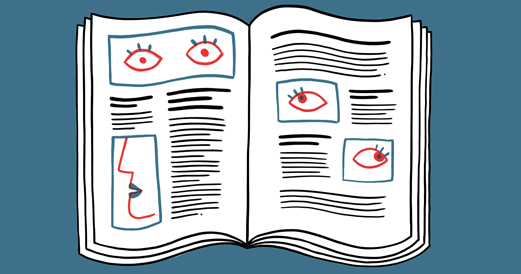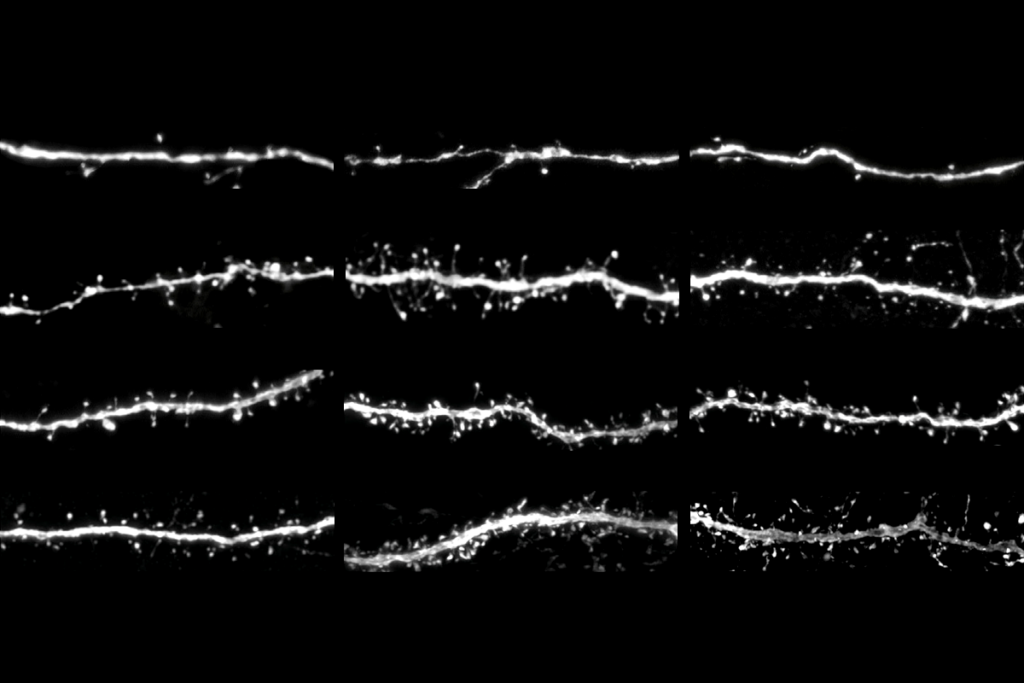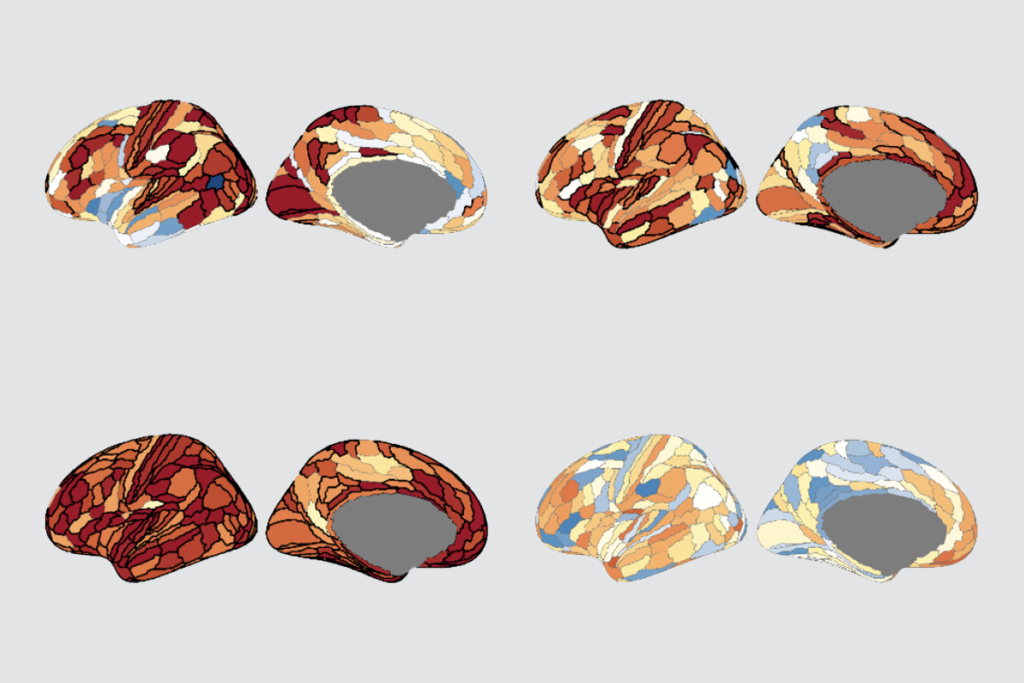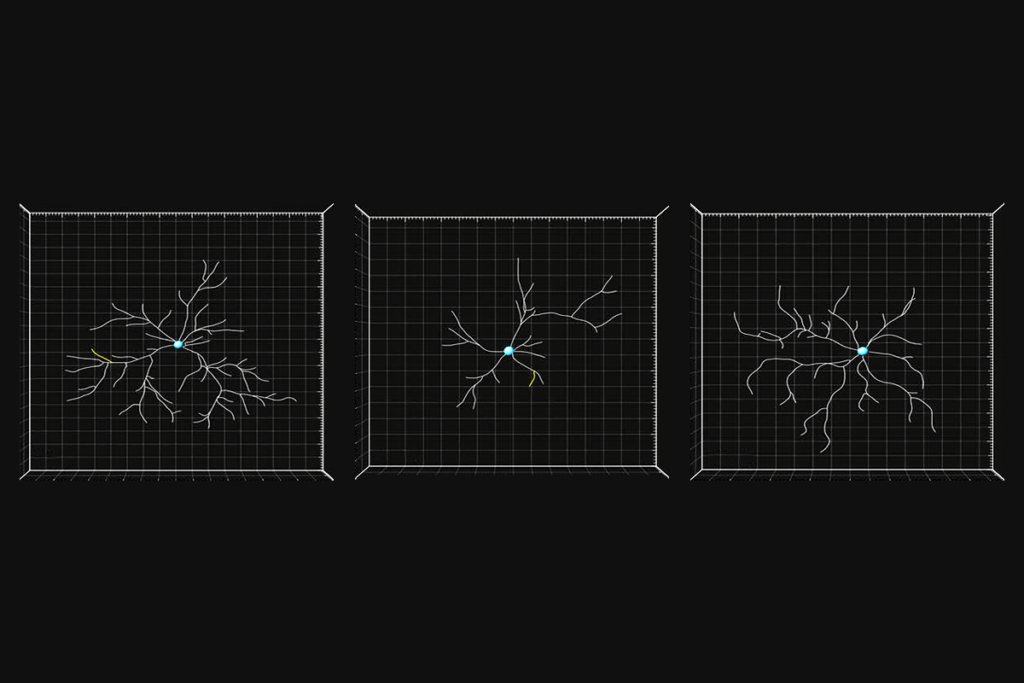Twin study suggests autism traits inherited independently
A new study of nearly 6,000 pairs of twins suggests that the three core traits of autism are inherited separately, and to varying degrees, both in individuals with autism and in the general population.
A new study of nearly 6,000 pairs of twins suggests that the three core traits of autism are are inherited separately, and to varying degrees, both in individuals with autism and in the general population.
The study, which appeared online 7 September in Behavioral Genetics,is based on a sample of 12-year-old participants from the Twins Early Development Study, a longitudinal study of twins born in the U.K. between 1994 and 19961.
Of the nearly 12,000 children in the new study, 80 children have a suspected autism spectrum disorder and score above the 95th percentile on each domain of the Childhood Autism Spectrum Test (CAST). The CAST is a 31-item screening tool filled out by parents that assesses symptoms of the three core features — social deficits, communication impairments and restricted and repetitive behaviors — associated with autism.
Each of these three domains is 72 to 76 percent heritable in males, and 58 to 74 percent heritable in females, the researchers found. These estimates are based on the degree of concordance, or agreement, in core autism traits between twins.
Males show more genetic overlap than females do on social and communication impairments in the sample as a whole, as well as among individuals with the highest scores on the CAST, the researchers report.
“If you measure the three parts of the triad in the general population, you get kids with autism who have all three sets of symptoms, children who have none and children who have one or two,” says lead investigator Angelica Ronald, assistant professor at the University of London’s Center for Brain and Cognitive Development in Birbeck. “The behaviors are fractionated out, autism being the almost rare example when you get all three together.”
Unmatched sets:
Ronald and her colleagues Francesca Happé and Robert Plomin first proposed the ‘fractionable autism triad’ in 20062. This hypothesis suggests that there are not only different genes for different autism-related symptoms, but that the behaviors associated with the disorder are also ‘fractionable,’ appearing at different frequencies and to varying severity in the general population.
Results from the new study validate those from two 2006 twin studies, conducted when the twins were 7 to 8 years old. One of those studies reported limited genetic overlap between symptoms of social impairment and restricted and repetitive behavior3. The other looked at communication impairments and found that most genetic influences are specific to each type of impairment4. The new study includes many of the same twin pairs, but is larger, and investigates gender differences in the heritability of the three domains.
The researchers calculated the degree of concordance in each set of symptoms between both monozygotic, or identical, twins, who share the same genetic code, and dizygotic, or fraternal, twins, who are as genetically similar as any other siblings, but who share the same uterine environment.
Their aim was to tease out the degree of genetic and environmental influences for each component of the autism triad between twins. “You can split environment into two types, shared and non-shared,” Ronald says. “It’s usually the non-shared effects that influence autism and autism traits.”
These can include everything from biochemical events in utero that affect only one twin, to birth complications and childhood accidents, she says.
Studies of twins first established the heritability of autism, and still play an important role in pointing to possible causes of the disorder, though they do not typically include DNA analysis.
“We need twin studies to tackle this problem from both a genetic and environmental standpoint,” says Joachim Hallmayer, associate professor of psychiatry at Stanford University in Palo Alto, California who was not involved with the new work.
In another twin study published earlier this year, Hallmayer reported that 38 percent of autism spectrum disorders are caused by genetic factors and 58 percent by environmental factors5. Other researchers challenged those results, saying that 192 twin pairs, of whom at least one twin has autism, is far too small a sample on which to base such a broad conclusion.
Geneticists also say that the study underplayed the importance of rare new mutations that might appear in only one twin.
Traveling companions:
Hallmayer says the results from the new study support his findings. “Clearly, there is quite a substantial amount of environmental factors involved,” he says.
The new study’s findings also raise a number of questions that still need explanations, Hallmayer says. “Why do these traits co-occur in autism?” he asks. “There must be something that ties them together.”
Ronald says molecular studies of genes such as CNTNAP2, which has been linked to the timing of language development in toddlers, as well as to autism and specific language impairment, provide experimental support for the fractionable autism hypothesis.
“CNTNAP2 is not necessarily associated with autism as a whole, but with language difficulties in autism, which is exactly in line with the fractionable autism triad hypothesis,” she says.
However, other epidemiological studies with a similarly large number of participants have shown that although each cluster of symptoms associated with autism does exhibit some degree of independence, the traits tend to “travel together,” says John Constantino, professor of psychiatry and pediatrics at Washington University in St. Louis.
Children with disorders such as specific language impairment and obsessive-compulsive disorder may also score high on one or more of the triad of symptoms, he points out. This might have contributed to the independent occurrence of symptoms in each category in the new study, he says.
Still, the high correlation between social and communication traits in males in the sample is a provocative finding, he says. “It may be an important and interesting lead to pursue in order to understand gender disparities in the [disorder].”
References:
1: Robinson E.B. et al. Behav. Genet. Epub ahead of print (2011) PubMed
2: Happé F. et al. Nat. Neurosci. 9, 1218-1220 (2006) PubMed
3: Ronald A. et al. J. Am. Acad. Child Adolesc. Psychiatry 45, 691-699 (2006) PubMed
4: Ronald A. et al. J. Am. Acad. Child Adolesc. Psychiatry 45, 1206-1214 (2006) PubMed
5: Hallmayer J. et al. Arch. Gen. Psychiatry Epub ahead of print (2011) PubMed
Recommended reading

Ramping up cortical activity in early life sparks autism-like behaviors in mice

New method identifies two-hit genetic variation in autism; and more

Protein tug-of-war controls pace of synaptic development, sets human brains apart
Explore more from The Transmitter

Four autism subtypes map onto distinct genes, traits

Autism-linked copy number variants always boost autism likelihood
